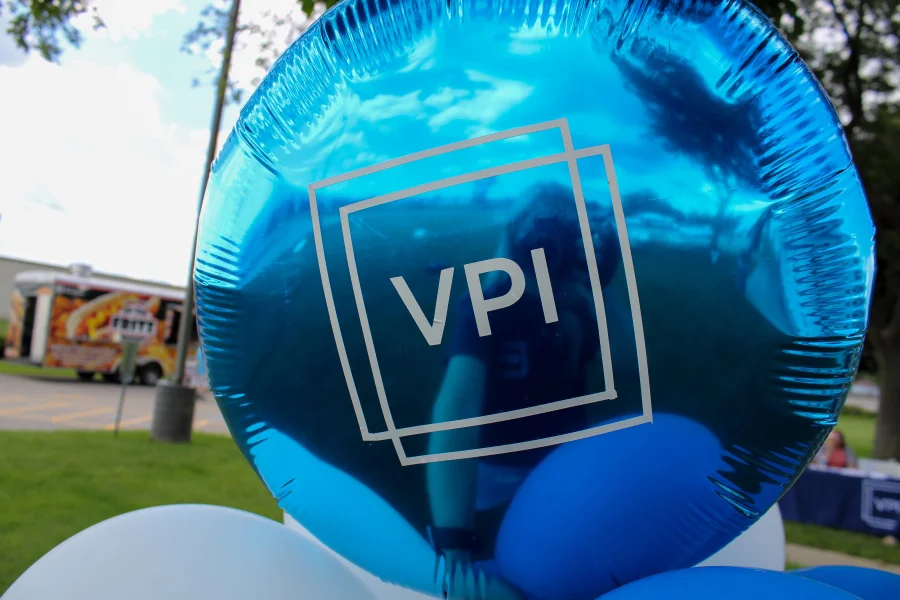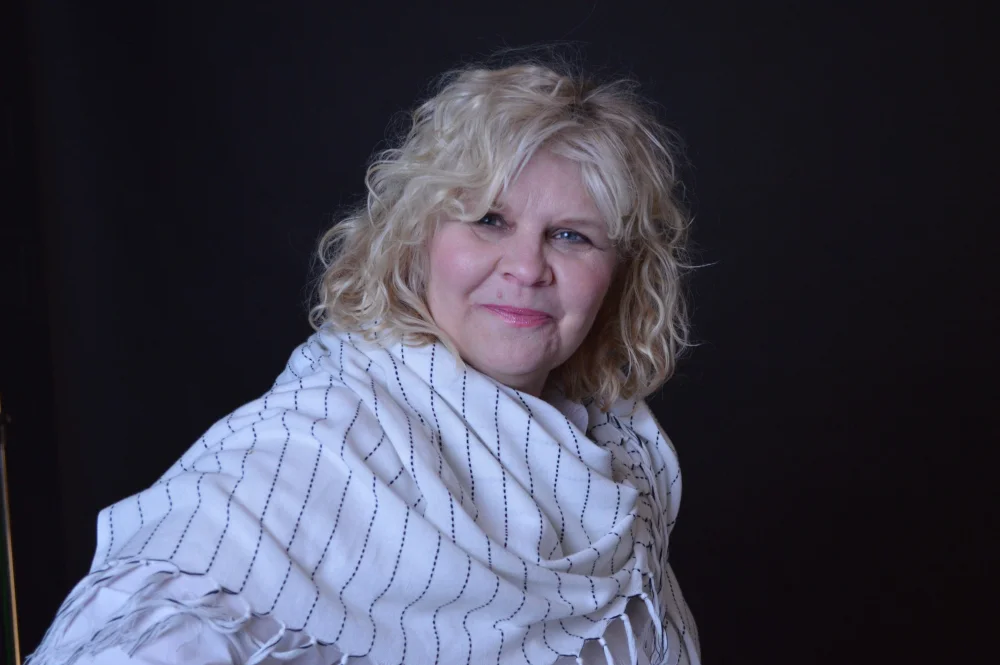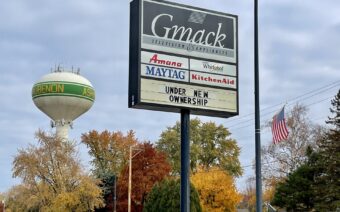
September 8, 2022
NORTHEAST WISCONSIN – The way a company or organization is perceived by its customer/audience is the essence behind a brand – conveying the identity, values and collective voice of a company.
Shelly Young, president and creative director of KHROME, an advertising agency in Green Bay, said as a company or organization evolves, many times so does its identity, which in turn can trigger the need for a rebrand.
“Usually, a reband is needed or happens because a company or an organization has evolved, and you, being the corporate identity, wants to evolve and change with that particular evolution,” she said. “You may have new goals and objectives. There may be an understanding that an image is dated… But it really takes the idea we need to show growth, we need to show progress and we need to show and identify who we are and how does that identify with our current client base, or a client base that is aspirational?”
Ryan Albers, partner and brand strategist with Quill Creative Studio in Oshkosh, said branding is one of those things that can often be overlooked.
“People think if they have their logo and their product is good, that people are inherently going to be raving customers spreading the good word about you,” he said “And although that might be true (for some), there’s things you can do to make sure that happens, or make sure it happens intentionally.”
Albers said oftentimes, people think branding is a great tool to have in the tool belt, when in fact “it is the tool belt.”
“It’s what keeps everything together so things don’t get lost,” he said. “It provides compartments for things to fit in, so that things are consistent whenever you do need to reach into that tool belt, and it provides a North Star that everything ran through a filter.”
Albers said if a brand is supposed to be known for x, y and z, then when doing things like a hiring campaign, a promotional campaign or an employee incentive programs, it’s critical to make sure it all aligns underneath with what this big idea is that is the brand.
“Branding is holistic, and it should impact and be your filter to run everything through for every piece of your business operation,” he said.
Albers and Young said they agree that if a company’s brand no longer reflects its mission/purpose, it could be time for a rebrand.
“A brand reflects the values of an organization,” Young said. “If it no longer does that, it’s time to take a look at it… It’s what we call, not an elevator speech any longer, but Twitter speech. People are only interested in 37 characters or less. So, what do you have to say with that, and how can you effectively say that with a look and a feel of design, and how does that convey the message?”
Strategy
Albers said proper branding starts with strategy – noting that even well-thought-out brands can find themselves at the rebranding tipping point at some point as it grows and evolves – within themselves and in the marketplace.
“One of the most important things when it comes to branding correctly, is brand positioning,” he said. “You know, at the core of everything, branding is the art of differentiation. Branding to be better is oftentimes not the best route, you should always be branding to be different.”

The Weidner Executive Director Kelli Strickland said sharing a rebrand with customers through multiple channels – including social media platforms – is important to a roll-out’s success. Submitted Photo
Young said Burger King looks nothing like McDonald’s, Coca Cola looks nothing like Pepsi and Kimberly Clark looks nothing like Ford Howard, but they all do the exact same thing.
“Everybody wants to look like everybody else, but nobody wants to look like their competition,” she said. “And that’s the worst thing you can do with a brand. As your brand begins to expand as you’re breaking into new audiences and new markets, you need to discern what it is you want that brand to say and how you distinguish how you cut through the clutter of everything else.”
Kelli Strickland, executive and artistic director of The Weidner, said the performing arts center’s recent rebrand was a “confluence of several different factors” – one being reconsidering what it means to be an art center in the Greater Green Bay community.
“It’s not just about coming up with a new logo and slapping it on all of our signature blocks,” she said. “We were trying to answer questions about how patrons of the arts, or new patrons who perhaps have not engaged with the arts yet, who they are and what are they looking for.”
Strickland said as the team began thinking about what all that meant, the rebrand started to make sense.
“We wanted to make sure we were serving all members of our community, and finding ways that are not boxing people out, whether it’s expectations of behavior or price point or sometimes the artists themselves,” she said. “So, it was a long conversation.”
Allie Weiher, marketing coordinator for VPI, a packaging services company in Appleton, said the company’s recent rebrand – which included a name and logo change from Valley Packing Industries to VPI – centered around a desire to clear up community confusion.
“When I started, I was coming to VPI with little information,” she said. “We didn’t even have a firm logo they could tell me was our logo. So we had to start building our brand from the bottom up.”
Weiher said VPI received a lot of feedback from confused community members and partners about who the company was and what it did – which was the nudge needed to move forward with a rebrand.
“Our old name was Valley Packaging Industries, and that implies we do packaging,” she said. “What isn’t implied is we’re actually a 501c (3) nonprofit. We provide more than 20 different community programs and services to people in the community who are disadvantaged, have disabilities or have some sort of barrier to traditional employment.”
?

Allie Weiher, marketing coordinator for VPI, said the company had to start from the ground up with its rebrand. Submitted Photo
Weiher said the overall goal of the rebrand was to create a better understanding of who VPI was.
“I think that was an immediate goal, but also a long term goal,” she said.
Changing perceptions
Courtney Hansen, the director of tourism for the City of Manitowoc, said the city’s rebrand – Visit Manitowoc – consisted of a complete rework of how tourism was advertised.
“We wanted this to be a recognizable brand residents could latch on to, and that also visitors, someone looking for general tourism information for this area, would be able to easily find us and know we were the go to for all their travel needs when coming to our area.”
Hansen said the decision to rebrand, which took about a year from idea to roll-out, was made with the hopes of bringing tourism into the 21st century.
“Really digitizing, and doing things a little bit differently,” she said. “With the branding itself, we’re hoping to attract that different demographic and also focus on making Manitowoc a destination. We want to have that strong brand that showcases that this is an awesome destination.”
Amy Albright, the executive director of the Oshkosh Convention and Visitors Bureau, said the push to move away from the city’s more-than-a-decade-old brand, Event City, centers around the evolution of the city’s offerings.
“The Event City brand was adopted more than 10 years ago – a lot has changed in Oshkosh since then,” she said. “We are in the process of developing a new logo and brand that will encompass all that Oshkosh has to offer. Events are a big part of Oshkosh, but there is so much more.”
Albright said the purpose of rebranding is to bring key differentiators to life.
“We want to promote Oshkosh to visitors and residents alike to continue to grow our community and increase economic impact through tourism,” she said. “We have so much to offer in Oshkosh, and this new brand will help us tell that story more effectively.”
Young said the approach a company or organizations takes with a rebrand depends solely on that company and its desired goal.
?

Shelly Long is the president and creative director of KHROME, an advertising agency in Green Bay. Submitted Photo
Albers said a rebrand is at an excellent time for free publicity, to make a splash in the market.
“You can crank up that dial as much or as little as you want depending on, is this a revolutionary rebrand to steer perceptions to get away from negative feedback or it could be just evolutionary, where we’re not going to lose any brand equity, but we’re gonna freshen things up,” he said. “So it all depends. That’s a big part of where you can customize the approach to fit the best path forward for the longevity of the brand.”
John Fanta, the vice president and general manager for the Green Bay Rockers, has been a part of two rebrands during his tenure with the area’s Northwoods League baseball club – both of which he said were a lot of work.
“There’s a buy-in (needed) by the community and by your fan base that needs to take place, and that doesn’t happen overnight,” he said. “There’s a lot that goes into it, a lot of logos that need to get changed throughout the facility and then there’s an audience you need to educate on why you’re doing it.”
Overcoming hurdles
Hansen said like with any new project, general community awareness and explaining the reasoning behind a rebrand can be difficult – noting complete transparency as a critical component.
“Making sure we keep people updated as things progress, so everyone knows what to expect,” she said.
Young said one of the biggest obstacles businesses struggle with is avoiding complacency, because rebranding can be an exhausting process.
“I also think there needs to be continuity,” she said. “It would be strange if Coca Cola was no longer red and white, and decided tomorrow they were going to be green and gold. That might be okay for Northeast Wisconsin, but people outside would be like, ‘a, hello.’”
Young said a rebranding initiative needs to be logical, complete with rationale.
“Make sure that people understand the story – every brand has a story,” she said. “How are you telling that story?”
Strickland said those involved in the rebranding process are a critical part of its long-term success.
?

Ryan Albers is a partner and brand strategist with Quill Creative Studio in Oshkosh. Submitted Photo
“I would say if you’re working with an internal team – so if you’re a large enough organization that you have an internal team that can launch a rebrand – take some time to invite in some outside voices, because we sometimes lose track of who we think we are and who we are perceived as being,” she said.
Albers said the long term goal is to get a “flywheel” started.
“In terms of branding, a flywheel is creating a cohesive and impactful customer experience,” he said.
 ‘Some really tall ships’ are returning to Door County
‘Some really tall ships’ are returning to Door County ‘I am incredibly grateful to be a small part of the team’
‘I am incredibly grateful to be a small part of the team’






